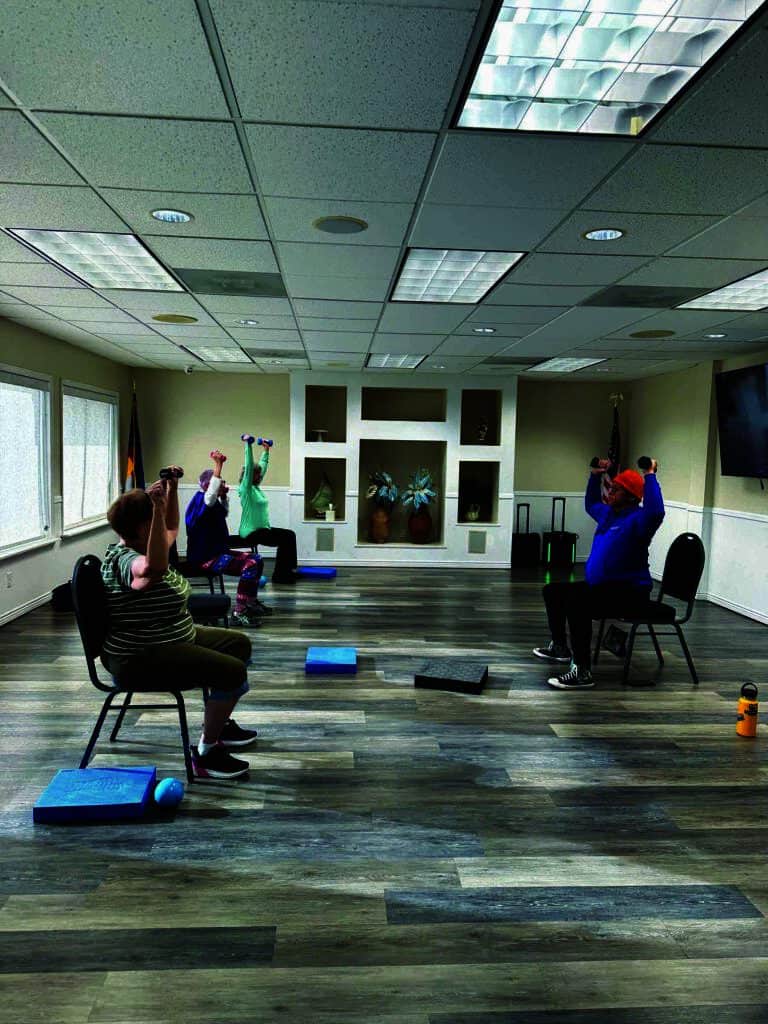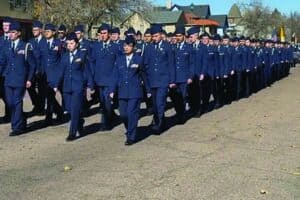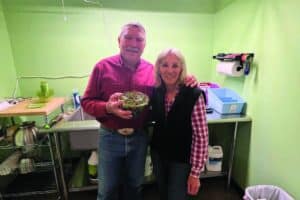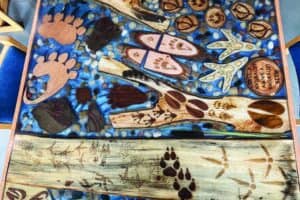By Erin Wheeler
A June 2024 news release by the World Health Organization reported that nearly one-third of adults worldwide did not meet the recommended levels of physical activity in 2022. Additionally, the report stated, “People over 60 are less active than other adults, underscoring the importance of promoting physical activity for older adults.”
Dr. Michael Furlin PT, DPT, OCS (physical therapist, Doctor of Physical Therapy and
Orthopedic Clinical Specialist) is a physical therapy provider in Falcon who shared his professional opinion with The New Falcon Herald on how to promote a more active lifestyle for the older generation in the community.
“Obviously (physical activity) is important for everybody, but for those over 50, it’s even more important to exercise and do strength training,” Furlin said.
Furlin did not sugarcoat just how important it is when he pointed out several detrimental effects that can result in sedentary older adults.
For one, a decreased basal metabolic rate (or how many calories burned during rest) can result from the absence of exercise and strength training. Furlin said, “Your body adapts to the stress placed upon it, so if you are not doing a lot of movement, then your basal metabolic rate is going to go down.” This change can contribute to faster weight gain and can in turn make physical activity more difficult.
Also, weakening of bones is a major issue in older adults, especially those who aren’t active. “As we age, we’re at risk for osteoporosis, which is basically when our inner parts of our bones turn spongy and lose density,” Furlin said. However, he said osteoporosis can be mitigated with resistance training. “Lifting weights and doing activities that bear weight like walking, jogging and jump roping are super important to place stress on the bones and joints to limit the risk of osteoporosis,” Furlin said. For people who have already been diagnosed with osteoporosis, Furlin stressed that it’s even more important to add resistance training into the program to rebuild bones and slow degradation.
Joint stiffness is another common problem that worsens in older adults with sedentary lifestyles. One of Furlin’s favorite sayings that he preaches in the physical therapy office is “motion is lotion.” In technical terms, that explains a process where joint movement signals the release of synovial fluid and other vital nutrients into the joint space, which stimulates smoother movement. Furlin said, “If you’re arthritic and you don’t move the joint, it’s going to lose the ability to move even further, because you’re not triggering that release of synovial fluid into the joint space. So, now your joints are tight and limited, and they hurt when they move. Then, your muscles adapt to the positions that they are maintained in for a long period.”
To further explain that domino effect, Furlin used the example of sitting too long. He said that when seated for extended periods, the muscles on the front of a person’s hips tighten and shorten and the glute muscles lengthen and weaken. This creates weak glutes and tight hip flexors, followed by the tightening of the front of the joint capsule itself, which results in a hunched standing position and weakened bones due to not undergoing enough stress.
Marylou Bride, the editor of The New Falcon Herald, is a prime example of an older adult suffering the consequences of a sedentary lifestyle. Once a spry senior who enjoyed a very active lifestyle full of swimming, kayaking, bike riding, hiking, paddle boarding, yoga and more now lives in pain with very limited physical abilities — and it’s her hunch that the cause is sudden inactivity. Five years ago, Bride was diagnosed with a non-tuberculous mycobacterial lung disease called mycobacterium intracellular avium complex, which inhibits her capacity for exercise. She has spent the last five years almost completely sedentary, and in the last year has experienced excruciating pain and bone problems from a fall and other less-traumatic events, including a simple hug and sitting at her desk too long. Bride said, “Everything is falling apart in my bones. I think it’s because I haven’t done anything to build my strength.” At this point in her prognosis (also factoring in osteoporosis, which she has dealt with for about 40 years), Bride is unsure if she will ever be able to resume her previous activity levels, but she said she hopes her story will help others realize that exercise is essential to keeping bones strong. Bride warned, “The bottom line: I have not been exercising and that is the kiss of death for older adults.”
But there can still be hope for adults who might think they can’t be active in their older age.
“Anything is better than nothing,” Furlin said, as he encouraged starting with low intensity activities like walking or chair yoga.
For older adults in the beginning stages of fitness who might not know their threshold for exercise yet, Furlin said that he recommends finding a professional to supervise activity. Some options are a physical therapist, personal trainer or group fitness classes like Silver Sneakers.
Silver Sneakers classes are offered at the Woodmen Hills Recreation Center in Falcon and consist of flexibility, strength, balance, light cardio and biometric training strategically structured throughout an hour of instructor-led group activity that is free of charge for residents and covered by some medical insurances.
Ricky Velliquette, a certified Silver Sneakers trainer, began offering the classes at WHRC in the middle of 2024 and has worked from the beginning to ensure that there is a low barrier to entry to suit a variety of abilities and serve as many community members as possible.

Woodmen Hills Recreation Center.
Velliquette said, “Silver Sneakers classes are generally a little bit slower. We don’t do anything super high impact. We don’t ever get on the floor or lie down, and most of the work is done either standing stationary or in a chair.”
While the classes are structured so anyone can take them, they are best suited for adults 60 years and older (the oldest participant so far is 90), and Velliquette said he thinks that the best candidates are people who were once active but dropped off for a while and want to get back into it.
One of the main senior-specific issues the classes help prevent is falls (and breaks from falls).
“The No. 1 hazard for older adults is falls, so anything I can do to help improve their balance is going to be beneficial for them,” Velliquette said. “Strength training is definitely going to help prevent breaks if they fall, and they may have the strength to get themselves back up.”
Mental and social benefits are bonus perks of the classes, too.
In the thick of her diagnoses and sudden inactivity, Bride found herself in a dark place mentally. “I was so upset that I think I went into a kind of depression, and then I just didn’t want to do anything,” Bride said. Perhaps if she had the kind of uplifting community that Silver Sneakers creates and the mental health benefits that even light exercise evokes, that could have helped in her time of need.
“To have something to go to, to have a reason to get out of the house — that’s huge. The mental and social aspects are too often overlooked,” Velliquette said. “If you feel like you’re a part of a community, and that they’re going to support you every time you show up, that’s going to help with retention and staying on track with your workouts.”






